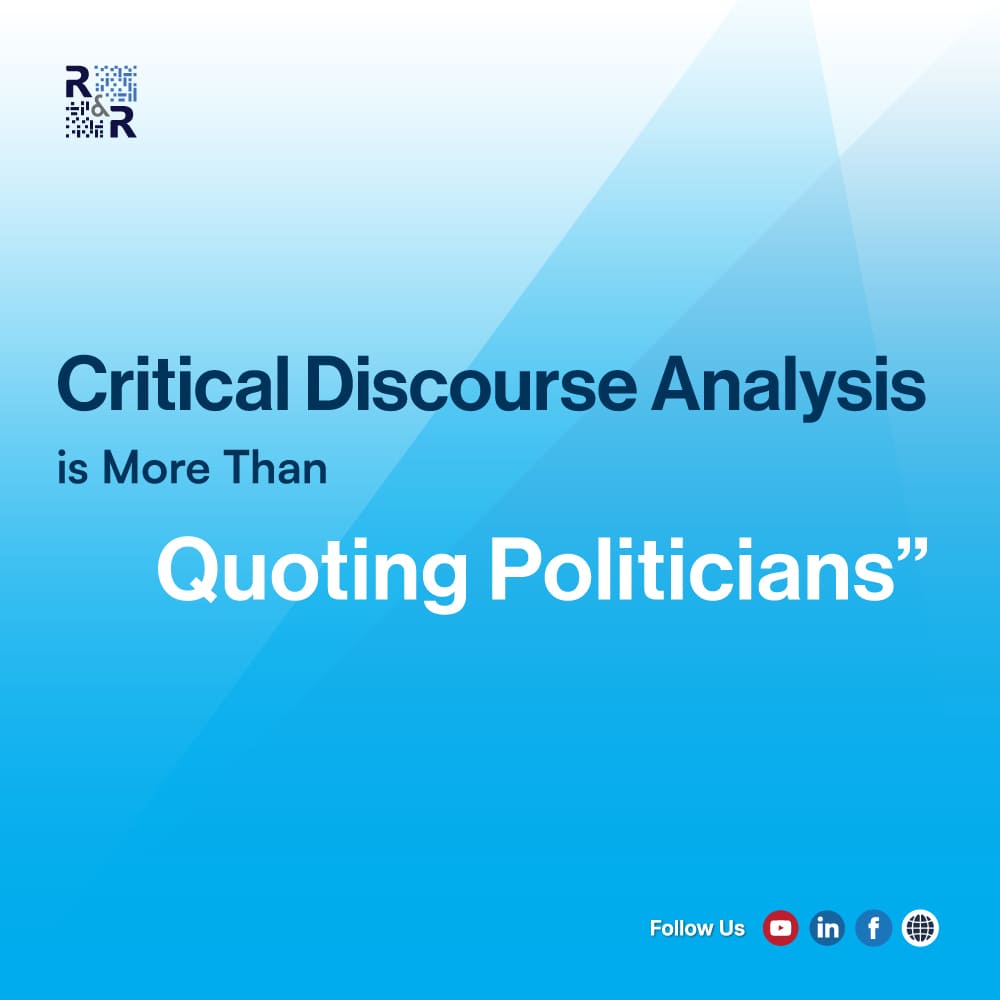Critical Discourse Analysis (CDA) has become increasingly popular in political science, communication, and policy research. Unfortunately, many studies misuse CDA by reducing it to quoting politicians or compiling soundbites. This approach weakens credibility and strips the method of its critical depth.
True CDA goes further. It examines how language produces and reproduces power relations, inequality, and ideology. When applied rigorously, CDA reveals the hidden politics of discourse and generates valuable insights for scholars, policymakers, and society.
What CDA Really Means
At its core, CDA is a method for analyzing language in relation to power and society. It asks:
- How does discourse maintain authority?
- Who benefits from particular representations?
- What ideologies are embedded in everyday communication?
Scholars like Norman Fairclough (1992), Teun van Dijk (1993), and Michel Foucault (1972) shaped the foundations of CDA. Their work demonstrates that discourse is never neutral—it always constructs social reality.
Common Pitfalls in CDA Research
1.Surface-Level Quoting
Simply presenting statements or speeches is reporting, not CDA. Rigorous analysis requires unpacking grammar, metaphors, framing, and rhetorical devices.
2. Ignoring Power Dynamics
CDA is explicitly critical. Ignoring who gains or loses power in discourse reduces the analysis to empty description.
3. Lack of Methodological Rigor
True CDA uses systematic coding frameworks, intertextual analysis, and attention to genres (media, debates, policy documents). Without this, findings remain anecdotal.
4. Missing Theoretical Anchoring
CDA is grounded in theory. Without Fairclough’s discourse-power nexus, van Dijk’s socio-cognitive model, or Foucault’s knowledge-power lens, analysis risks becoming opinion.
Why It Matters
When CDA is reduced to quotation, serious consequences follow:
- Weak Scholarship: Limited contribution to academic debates.
- Lost Policy Relevance: Policymakers need insights into how language legitimizes decisions.
- Erosion of Credibility: Reviewers can detect when CDA is misapplied.
CDA done poorly resembles journalism. CDA done rigorously produces powerful social science.
How to Do CDA the Right Way
At Research & Report Consulting, we recommend:
- Move Beyond Description: Analyze how language shapes ideologies and identities.
- Systematic Coding: Use structured frameworks across multiple texts and genres.
- Power and Ideology Focus: Always connect discourse to authority and inequality.
- Anchor in Theory: Apply frameworks by Fairclough, van Dijk, or Foucault.
- Policy Application: Translate findings into insights that inform governance and public trust.
Chart Example: Levels of CDA

Final Thought
Critical Discourse Analysis is not about quoting—it is about uncovering how language maintains or challenges power. When researchers adopt systematic, theory-informed methods, CDA becomes a robust tool that connects language, ideology, and governance.
Question for Readers
Have you encountered CDA studies that felt more like reporting than analysis? What did they miss? Share your thoughts in the comments.
References
- Fairclough, N. (1992). Discourse and Social Change. Polity Press.
- van Dijk, T.A. (1993). Principles of Critical Discourse Analysis. Discourse & Society, 4(2), 249–283.
- Foucault, M. (1972). The Archaeology of Knowledge. Pantheon Books.
- Wodak, R., & Meyer, M. (2009). Methods of Critical Discourse Analysis. Sage.

